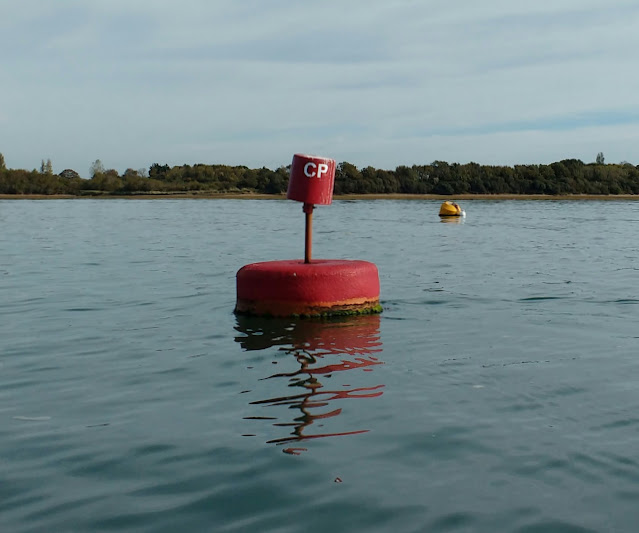Saturday was a grey but dry day with a nice F4 northerly so instead of going rowing I took Snarleyow out on the harbour to continue my sailing education.
Being a northerly, the wind was off the beach at Warblington so I managed to get away without giving the dog walkers too much to snigger about, but realised a few minutes later that I had left my lifejacket in the car. Rowing habits die hard...
Went back, got properly equipped and headed out again. All the strings seemed to be connecting to the right things this time except for the mizzen, where I had tightened the halyard rather than the sprit. Funny how long it takes to work out what is wrong when the view is totally obscured by the very thin mizzen mast.
That corrected, I headed off down channel only to meet Langstone Cutters coming up (all three galleys on a mission for cake at Emsworth). Ron Williams took these pictures and everyone kindly did not yell any advice about the mainsail downhaul being too loose and the mizzen halyard being too tight.
These were probably factors in my failure to go about properly, having on one occasion to resort to the oars to haul me around, which was observed and did cause comment later. Once I had the rig right, I also found after considerable practice that hauling the sail in properly while going about improved things a lot.
Later still I passed the pilot gigs and who should be aboard one of them by Helena Smalman Smith, expedition rower supreme, who describes her first outing in a thole pin boat
here.
Coincidentally, Helena's new business is featured in
RowPerfect today.
Paddleducks Rowing offers expeditions from its base on the Thames near Egham, as well as corporate challenges and coaching. A great enterprise and one that will make Helena and her business partner Carol Cornell world champions in the delicate art of taking unstable boats with outriggers and very long oars handled by novice crews, through locks.
At the end of the day, I even managed to get in a bit of rowing myself.
My expedition philosophy is to sail downwind and row upwind, so I practiced striking the rig in mid-harbour and rowing back to the slipway. Snarleyow proved quick and not unduly sensitive to the wind on the nose,
A very successful day all round.



















































